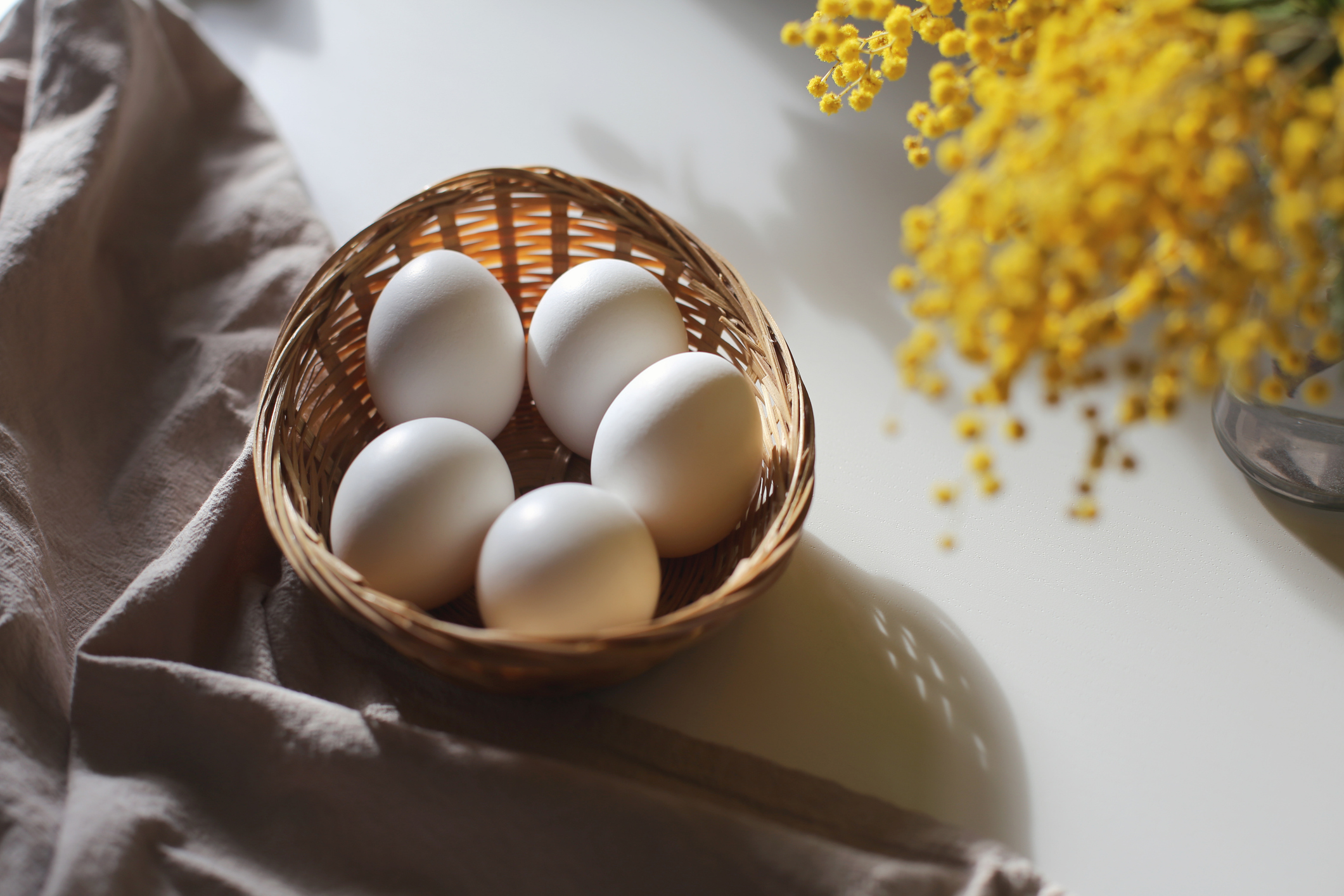Like the Mutual Fund? Meet the ETF
Some portfolio managers are bringing their star power to exchange-traded versions of their funds. Also, four “nontransparent” ETFs to keep your eye on.


Exchange-traded funds are practically synonymous with index investing. But lately, actively managed ETFs have been flooding the market. Since the start of 2021, the "overwhelming" majority of new ETF launches have been actively managed, says Todd Rosenbluth, CFRA's head of ETF and mutual fund research. Many of these active ETFs follow the same strategies – some even share the same names – of well-known, top-rated actively managed mutual funds.
Some of these new ETF replicas could be worthy choices for your portfolio. But first, it's important to understand how they work (they vary a bit from how index-based ETFs operate), as well as how they may differ from their mutual fund counterparts.
Of course, active ETFs aren't totally new. The first one launched in 2008, according to Morningstar. Pimco Total Return Bond ETF, now called Pimco Active Bond (BOND), arrived in early 2012. And Ark Investments opened the first of its seven actively managed ETFs in 2014, including one of our favorites, Ark Innovation (ARKK), a member of our Kiplinger ETF 20 list.
From just $107.88 $24.99 for Kiplinger Personal Finance
Become a smarter, better informed investor. Subscribe from just $107.88 $24.99, plus get up to 4 Special Issues

Sign up for Kiplinger’s Free Newsletters
Profit and prosper with the best of expert advice on investing, taxes, retirement, personal finance and more - straight to your e-mail.
Profit and prosper with the best of expert advice - straight to your e-mail.
But some of the newest active funds are a different breed. Instead of reporting detailed portfolio holdings daily, certain funds, dubbed semitransparent or nontransparent ETFs, operate under a rule adopted in 2019 that allows them to report portfolio holdings quarterly. That enables active fund managers to implement their strategies in an ETF structure without "tipping their hand" on their portfolio moves, says Ben Johnson, Morningstar's director of global ETF research. It paved the way for traditional fund firms, including Fidelity, T. Rowe Price and Putnam Investments, to launch active ETFs that mimic the strategies of their star mutual funds.
Price launched four active ETFs last summer. Each is "patterned after" a well-known Price mutual fund, such as Dividend Growth and Equity Income (PRDGX), says Scott Livingston, head of Price's ETF strategy and capital markets global team. Fidelity has rolled out nine actively managed stock and bond ETFs since mid-2020. Many are "clone-ish" versions of the firm's best-known active mutual funds, including Fidelity Blue Chip Growth (FBGRX), Magellan (FMAGX) and New Millennium (FMILX), says Greg Friedman, head of ETF management and strategy for Fidelity.
Overall, the influx of active nontransparent ETFs means more choices for investors, which is a good thing. But although these ETFs offer many positives, there are also some caveats to understand before you jump in.
Lower Fees, Limited Holdings
Nontransparent ETFs charge lower expense ratios than their mutual fund originals – between 0.20 and 0.40 percentage point less, on average. But all of the typical advantages of traditional ETFs apply to these new active ETFs, too. All you need is enough cash to cover the price of a single share and a brokerage account to invest in one, and you can execute your trade at any time of the day. And like all ETFs, nontransparent ETFs are inherently more tax efficient than their mutual fund archetypes.
"It's a great option for folks looking for tax efficiency," says Price's Livingston.
But compared with mutual funds, ETFs must work under some constraints. They can't hold stakes in private companies – think Uber Technologies (UBER) and Peloton Interactive (PTON) before they went public – as many mutual funds do. And active nontransparent ETFs, in particular, can't hold stocks that are listed on foreign exchanges (but American depositary receipts – certificates representing foreign shares that trade here – and the like are okay).
What's more, ETFs can't close to new investors as their mutual fund counterparts often do when assets grow to an unwieldy size. This matters most with funds that invest in certain asset classes, such as small-company stocks.
"Not every active mutual fund strategy is a good fit for an ETF," says Morningstar's Johnson.
The performance of an active nontransparent ETF may differ from that of its mutual fund counterpart, even though both are run by the same manager and follow the same strategy. For example, over the past 12 months, T. Rowe Price Growth Stock ETF (TGRW) has trailed its mutual fund counterpart by more than four percentage points.
Returns can swing the other way, too. The ETF version of T. Rowe Price Blue Chip Growth beat its mutual fund sibling over the past 12 months by more than one percentage point.
The difference in returns stems in part from the fact that these active nontransparent ETFs – Johnson calls them ANTs – by definition disclose less than typical ETFs. When investors buy or sell shares in a traditional ETF, the market makers who carry out the necessary trades have up-to-date information on what securities to buy and in what quantities.
If an ETF reports holdings only quarterly, however, the market makers must work with a "proxy" or "tracking" basket of securities – an approximation of an ETF's holdings. The end result: The actual holdings of an ETF may vary compared with its proxy basket and with its mutual fund. For instance, on a recent day in early September, Fidelity Blue Chip Growth ETF (FBCG) held roughly 330 stocks; the mutual fund, 448; and the ETF's proxy basket, 285.
Some fund companies have come up with trading technology that aims to limit the variations between the portfolios. And the firms are as upfront as possible about these portfolio variations. They publish daily proxy basket holdings, as well as the percentage of overlap between the basket and the actual ETF portfolio. In early September, for example, Fidelity reported that Blue Chip Growth ETF had a 75% overlap between its tracking basket and the ETF's actual holdings.
But the knock-on effect of these variations is potentially higher costs. A wider and more volatile bid-ask spread – the difference between the highest price a buyer will pay and the lowest price a seller will accept – is likely with ANTs, says Johnson. That means the price you pay when you buy or sell ETF shares may not match the value of the fund's portfolio. And these price differences may be bigger than what you would see with popular index ETFs.
For these reasons, not everyone is a fan of nontransparent ETFs.
"I am not investing in these ETFs," says Greg Zandio, a certified financial planner in Minneapolis. Among other things, "they cut against the whole reason for ETFs: transparency and low fees," he says.
But some advisers are selectively folding active ETFs into their clients' portfolios. They make sense in investment classes for which you seek an active manager, says Joseph Favorito, a CFP in Melville, N.Y., who favors active management for bonds in particular.
Watch These ETFs
It's still early days for nontransparent ETFs. But we're keeping our eyes on a handful that are related to some of our favorite actively managed mutual funds. Although we wouldn’t normally recommend ETFs with short track records, we highlight here some new active funds run by mutual fund managers we trust. Returns and data are through Sept. 10.
American Century Focused Dynamic Growth ETF (FDG). Large companies with sustainable competitive advantages, a history of high profits and good growth prospects make for ideal stocks in this fund. The managers start with a quantitative model to narrow their universe and then do nitty-gritty, fundamental research before they invest in 30 to 50 stocks in fast-growing companies and "market disrupters." Buckle up for the ride because it can get bumpy, especially with Amazon.com (AMZN), Tesla (TSLA) and Alphabet (GOOGL) as the top holdings in the portfolio.
The ETF's mutual fund cousin shares the same name and managers. Since taking over in mid-2016, the managers have outperformed their mutual fund and ETF peers – funds that invest in large, growing companies – in every full calendar year. Over the past 12 months, both the mutual fund and the ETF, which launched in March 2020, beat the S&P 500 Index by more than one percentage point.
Fidelity Blue Chip Growth ETF (FBCG). This ETF's mutual fund counterpart is a member of the Kiplinger 25, the list of our favorite no-load funds. Manager Sonu Kalra has managed the mutual fund, which focuses on fast-growing large companies, since 2009 and has consistently delivered solid, peer-beating returns. Now he steers the ETF strategy, too, with help on execution from Michael Kim. "It's magical from my perspective, because I don't do anything differently for the ETF than I do for the mutual fund," says Kalra.
The ETF, which launched in June 2020, has a 12-month return of 42.0%. That outpaced the S&P 500 Index and 85% of the ETF's peers (mutual funds and ETFs that invest in large, growing companies).
T. Rowe Price Dividend Growth ETF (TDVG). For this fund, yield matters – but not as much as whether a company has a willingness to increase its dividends. Manager Tom Huber believes that a steady record of dividend hikes is an indicator of a company's financial health and growth prospects, and that over time those payouts can significantly contribute to total return. Microsoft (MSFT), Apple (AAPL) and Visa (V) are top holdings.
Though this ETF is just over one year old, Huber's winning track record over 20-plus years at the mutual fund, which is also a member of the Kip 25, is proof that he knows what he's doing. Since he took over in 2000, the mutual fund has returned 8.8% annualized, which beat the 7.3% average annual return of the S&P 500. So far, the newly hatched Dividend Growth ETF has kept pace with its mutual fund parent. Both funds boast roughly the same returns of about 32% over the past 12 months.
Nuveen Small Cap Select ETF (NSCS). This ETF had a record of just over a month at the time we went to press. But comanager Gregory Ryan has run the strategy in a mutual fund with the same name for more than eight years (comanager Jon Loth joined in early 2019). Over that time, the fund returned 11.9% annualized, which beat the 11.4% gain in the Russell 2000 small-company index.
Loth and Ryan search for small companies (roughly $40 million to $12 billion in market capitalization) that are attractively valued relative to industry peers, have strong or improving cash flows, revenues and earnings growth, and have a catalyst to drive the stock's price up over the next one to two years. Avient (AVNT), which provides specialty polymers, and Saia (SAIA), a trucking company, are among the mutual fund's top holdings.
Small Cap Select ETF's fees appear high compared with other funds we highlight here. But the ETF is far cheaper than its parent mutual fund, which charges a 5.75% load and 1.24% in annual expenses.
Profit and prosper with the best of Kiplinger's advice on investing, taxes, retirement, personal finance and much more. Delivered daily. Enter your email in the box and click Sign Me Up.

Nellie joined Kiplinger in August 2011 after a seven-year stint in Hong Kong. There, she worked for the Wall Street Journal Asia, where as lifestyle editor, she launched and edited Scene Asia, an online guide to food, wine, entertainment and the arts in Asia. Prior to that, she was an editor at Weekend Journal, the Friday lifestyle section of the Wall Street Journal Asia. Kiplinger isn't Nellie's first foray into personal finance: She has also worked at SmartMoney (rising from fact-checker to senior writer), and she was a senior editor at Money.
-
 I'm want to give my 3 grandkids $5K each for Christmas.
I'm want to give my 3 grandkids $5K each for Christmas.You're comfortably retired and want to give your grandkids a big Christmas check, but their parents are worried they might spend it all. We ask the pros for help.
-
 If You're Not Doing Roth Conversions, You Need to Read This
If You're Not Doing Roth Conversions, You Need to Read ThisRoth conversions and other Roth strategies can be complex, but don't dismiss these tax planning tools outright. They could really work for you and your heirs.
-
 Could Traditional Retirement Expectations Be Killing Us?
Could Traditional Retirement Expectations Be Killing Us?A retirement psychologist makes the case: A fulfilling retirement begins with a blueprint for living, rather than simply the accumulation of a large nest egg.
-
 The Most Tax-Friendly States for Investing in 2025 (Hint: There Are Two)
The Most Tax-Friendly States for Investing in 2025 (Hint: There Are Two)State Taxes Living in one of these places could lower your 2025 investment taxes — especially if you invest in real estate.
-
 Best 401(k) Investments: Where to Invest
Best 401(k) Investments: Where to InvestKnowing where to find the best 401(k) investments to put your money can be difficult. Here, we rank 10 of the largest retirement funds.
-
 Fidelity Strategic Income Fund Excels In Hard Year for Bonds
Fidelity Strategic Income Fund Excels In Hard Year for BondsThe fixed-income market was volatile in 2023, but this Fidelity bond fund outperformed its peers thanks to strategic moves by management.
-
 What Is Margin Trading?
What Is Margin Trading?Margin trading is buying and selling stocks with borrowed money. It can generate big rewards, but margin trading also involves multiple risks.
-
 How to Find the Best 401(k) Investments
How to Find the Best 401(k) InvestmentsMany folks are likely wondering how to find the best 401(k) investments after signing up for their company's retirement plan. Here's where to get started.
-
 How to Master Index Investing
How to Master Index InvestingIndex investing allows market participants the ability to build their ideal portfolios using baskets of stocks and bonds. Here's how it works.
-
 Bond Basics: Zero-Coupon Bonds
Bond Basics: Zero-Coupon Bondsinvesting These investments are attractive only to a select few. Find out if they're right for you.
-
 Bond Basics: How to Reduce the Risks
Bond Basics: How to Reduce the Risksinvesting Bonds have risks you won't find in other types of investments. Find out how to spot risky bonds and how to avoid them.